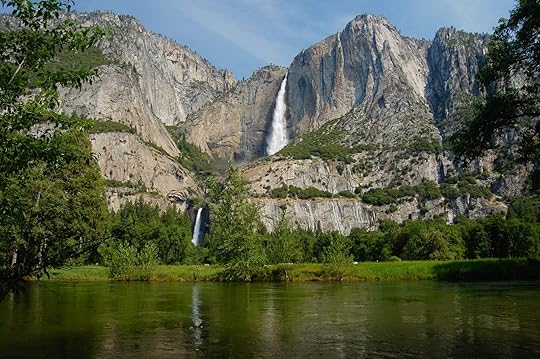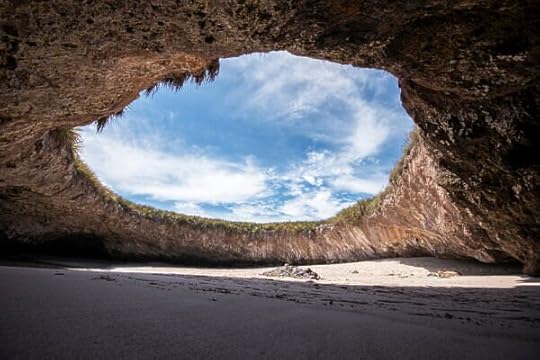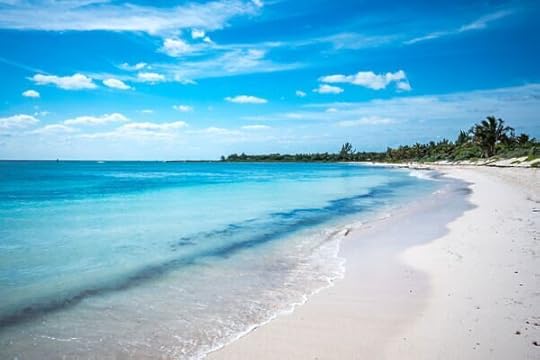Matador Network's Blog, page 502
April 4, 2022
Best Airbnbs in San Francisco

if you plan to book an AIrbnb in san Francisco, look for three primary qualities. They should be located in or around the city center, they should offer views of either the skyline or Golden Gate (bonus points for both), and they should enhance your experience of the vibrant international culture of the city. These are top-rated best Airbnb San Francisco properties to experience the best of the city.
We hope you love the spaces and stays we recommend! Just so you know, Matador may collect a small commission from the links on this page if you decide to book a stay. Listed prices are accurate as of the time of publication. See our full Advertiser Disclosure here.
Luxury home by the bay with rooftop hot tub
Photo: Airbnb

Photo: Airbnb

Photo: Airbnb

Photo: Airbnb
Full house Airbnb San Francisco rentals are notoriously pricey, particularly when they are well-placed. This one is worth the price, especially since you can grab a full crew and split the bill. It’s clean and cozy, with the boutique upscale vibe you’d expect at a nice hotel but with home amenities including a stocked kitchen, a rooftop hot tub, and plenty of lounge space. The views of the downtown skyline are worth the price of entry alone — particularly if you have a bottle of bubbly with which to toast.
Eight guests, five bedrooms
Price: $1,499 per night

Photo: Airbnb

Photo: Airbnb

Photo: Airbnb
Superfast WiFi. Nearby cafes and pubs. Historic aesthetic. This classic oasis in the Mission District sets you up for an unforgettable trip to the heart of the city. From here you can get everywhere, including Haight Ashbury and Golden Gate Park to the west and the bay to the east. The home itself is also quite something, with vibrant decor offering a classic but trimmed aesthetic that’s as welcoming as it is cozy. It’s efficient and comfortable and puts you nearby to the best of the city. And at this price point, it’s also just as affordable as renting an luxury hotel room.
Four guests, two bedrooms
Price: $599 per night

Photo: Airbnb

Photo: Airbnb

Photo: Airbnb

Photo: Airbnb
Pacific Heights is the heart of the action in San Francisco these days, home to some of the city’s best dining and most authentic vibes. One of the best San Francisco Airbnbs, this unit is well-trimmed, with a modern kitchen and incredible views out over the city and the water. For real, these city views most only see from the window of an airplane — including the Golden Gate Bridge, downtown, the ocean, and rows of quaint Victorian homes. And should you wish to explore beyond the reaches of Pacific Heights, pubic transit is right there. This is a great unit for a mid-sized group or family.
Seven guests, four bedrooms
Price: $1,124 per night

Photo: Airbnb

Photo: Airbnb

Photo: Airbnb

Photo: Airbnb
This warehouse condo epitomizes San Francisco chic. It’s in the heart of the city near Mint Plaza, within walking distance or a quick hop to everything from Haight-Ashbury to the Mission to South Beach, and puts you a stone’s throw from the cuisine of every continent. San Francisco Airbnbs that are this comfortable and convenient are tough to come by at this price, making the unit perfect for couples or solo travelers looking to spend some time getting to know the city.
Two guests, one bedroom
Price: $229 per night

Photo: Airbnb

Photo: Airbnb

Photo: Airbnb

Photo: Airbnb
Who hasn’t dreamt of staying in a San Francisco Victorian townhouse? A stay here is like living in Full House and Nash Bridges all at once, with an added dose of modernity and less drama. It’s cute, convenient, and offers an experience that you won’t find in most San Francisco Airbnbs. If traveling with family or a small group, the home houses up to five guests with plenty of room to stretch in the backyard.
Five guests, two bedrooms
Price: $249 per night

Photo: Airbnb

Photo: Airbnb

Photo: Airbnb

Photo: Airbnb
Live the San Francisco dream in this private guest suite right in the heart of San Francisco. Walk in the footsteps of locals, experience the city’s best cafes, and wander through Golden Gate Park. Or simply chill with a drink on the patio overlooking one of the most vibrant parts of the city, with views of both the bay and Buena Vista Park. If you’re looking for an easy time in the big city, this is your spot.
Two guests, one bedroom
Price: $163 per night

Photo: Airbnb

Photo: Airbnb

Photo: Airbnb

Photo: Airbnb
This garden apartment offers three primary perks. First, it’s located near where the city meets the Pacific Ocean, offering a unique vantage point of San Francisco and an experience you won’t find in SoMa or Downtown. Second, it’s surrounded by a beautiful garden, which is an absolute pleasure to wake up to each morning. And speaking of waking up, the third charm is the bed. Reviews state it’s huge and ridiculously comfortable. For solo travelers or couples looking for a romantic stay, San Francisco Airbnbs don’t get better than this.
Three guests, one bedroom
Price: $157 per night

Photo: Airbnb

Photo: Airbnb

Photo: Airbnb

Photo: Airbnb
What makes San Francisco one of the best cities in the US is its international urban culture. This modern loft offers easy access to that vibrancy, along with an inspiring design that emphasizes the city’s skyline from every vantage point. The unit’s spacious design optimizes every square foot, giving you plenty of room in a city known for its often tight quarters. This is an ideal loft for a family, couple, or small crew of travelers looking to experience the best of San Franciso but needing an inspiring place to remain productive as well.
Four guests, one bedroom
Price: $420 per night

Photo: Airbnb

Photo: Airbnb

Photo: Airbnb

Photo: Airbnb
Family travel is so much easier when your accommodations feel like home. This townhome is perfect at accomplishing that — it’s clean and modern and well-equipped for everything a traveling family could need. Bonus that it’s also full of super-inspiring art and the interior design puts it among the best San Francisco Airbnbs for simply lounging. Outdoors is a fire pit around which to dine and share stories, a rare amenity in a big city but one that perfectly complements the modern luxury of this home. 
Six guests, four bedrooms
Price: $1,200 per night
Every National Park Has Free Entry on This Gorgeous Spring Saturday (and It’s Not the Only One This Year)

Getting into whatever national park you with will come free on April 16. Just in time for Earth Day, all national parks across the United States have free entry on the third Saturday in April. And it’s not the only one.
Accessing national parks isn’t as easy as striding down the nearest path clad in hiking boots and sunscreen: annual pass fees range from $35 to $60, and even one-time visits are usually $20 to $35 per vehicle. Even though park fees go toward maintaining trails, paying staff, and protecting habitats and animals, the fees can still add up, and the cost of admission (and other associated park fees) is often given as a contributing factor to why park visitors are overwhelmingly white.
However, the National Park Service wants to offer everyone access to their public lands regardless of budget concerns. That’s why the Park Service announced five national park free entry days in 2022, giving everyone the chance to experience the majesty and grandeur of America’s national parks.
The following days will be national park free entry days:
Monday, January 17 – Martin Luther King, Jr. Day Saturday, April 16 – First day of National Park weekThursday, August 4 – Anniversary of the Great American Outdoors Act Saturday, September 24 – National Public Lands Day Friday, November 11 – Veterans Day“Whether on an entrance fee-free day or throughout the year, we encourage everyone to discover their national parks and the benefits that come from spending time outdoors,” National Park Service Director Chuck Sams said in a statement. “National parks are for everyone and we are committed to increasing access and providing opportunities for all to experience the sense of wonder, awe and refreshment that comes with a visit to these treasured landscapes and sites.”
While most people may think of national parks as being better suited to hikers, backpackers, campers, and other active adventurers, many parks have far more to offer. National parks protect historic sites, offer guided tours of massive caves for all ages, and usually have free family programs, lectures, and activities during the busy seasons. Some even have art classes and annual wildlife-watching events. You also don’t need to travel to a national park to take advantage of it, as all sites managed by the National Park System are free those days. You’ve got 423 to choose from, including national monuments, national historic sites, national recreation areas, and more.
Can’t make one of those five national park free entry days? No problem: you may be able to take advantage of one of these other free ways to enter a national park. Thanks to Every Kid Outdoors, fourth-graders and their families can get into hundreds of national parks for free for a year. Veterans and gold star families can always access America’s national parks for free, and seniors can get discounted annual national park passes. People with disabilities can receive annual national park passes for free, and volunteering at some park events, such as Yosemite Facelift (an annual effort to pick up trash around the park) will also get you a coupon for free entry into a federally managed site.
You could also consider visiting a federally managed site that isn’t a national park as those tend to be cheaper. For instance, the Lewis & Clark National Historical Park is just $10 per person and Isle Royale National Park is only $7 per person. And some of the most beautiful parks in the country, like North Cascades National Park and Great Basin National Park, are free year-round.
With so many ways to enjoy the parks at free or reduced rates, 2022 seems like a fantastic year to get out there and enjoy the beautiful outdoors. 
What makes wild camping different

Wild camping might not be your first thought when it comes to self-care and beating stress. But modern life is draining, and sometimes we need to check in on our basic needs and focus back on the body and mind — easier said than done when you can’t escape from social media notifications and work emails. Sleeping outdoors can put you back in touch with nature, and offer you the headspace you need to refocus.
Wild camping, also called free, freedom, or dry camping involves finding somewhere that isn’t an official campsite, and sleeping there without leaving a trace. While you do need to make sure you’re doing it safely and legally, you’re able to choose exactly where you want to sleep: as close or far from home as you feel comfortable. From the effort you expend to get to your campsite to the joy of completing a challenge, you’ll experience all sorts of proven stress-busting techniques in just one night away from home. Here are a few reasons why wild camping is the ultimate de-stressor.
1. You’ll reconnect to the environment.Between the car, the office, and the rooms of our homes, many of us spend a lot of time in confined spaces. A lunchtime walk in a built-up environment is great, but it might not make you feel the awesome power of nature in the way you do when you’re lying under a star-flecked sky. Being out in nature has been linked to positive emotions, including feeling a oneness with the universe. Not only does reconnecting with nature offer perspective on our stressors, but it has also been shown to reduce rumination and obsessive thoughts, and it helps you feel powerful emotions like awe, which can lift your mood.
2. You’ll work up a sweat and breathe more deeply.Not every wild camping trip needs to be an endurance marathon, and a night outside is a refreshing change of scenery even in your own backyard. But adding in some rhythmic exercise, like walking, running, or cycling, is a proven stress-buster. Getting the blood pumping also encourages deep diaphragmatic breathing, which can reduce heart rate and blood pressure, calming you down. Enjoy the natural euphoria of a body pumped with endorphins when you reach your destination and soak up the view.
3. You’ll complete lots of manageable goals.Stress can make us feel like whatever efforts we are putting in just aren’t enough. If your stress revolves around a to-do list that spawns more items every time you tick something off, set goals for your wild camping trip that are specific, measurable, attainable, realistic, and timely. They might not be easy to complete but they don’t have to be complicated: “reach the top of the hill before the sun goes down” is a perfect example. And if you don’t manage it this time, don’t beat yourself up. The hill will be there for another attempt.
4. No signal, no stress.Our cell phones can be really bad for our stressed-out brains. Constant swiping through links and ads vying for attention can make us more impulsive, always waiting on the next notification. Smartphone compulsion is even a recognized addition. A digital detox becomes much easier when there’s no signal, and when you’re focussed on the fun you’re having in the moment.
5. You’ll experience some healthy fear at night.It’s natural to feel scared when you’re bedding down outside, and I still do, especially in the woods as it gets to twilight and the owls start hooting. Fear and anxiety are important survival mechanisms, but chronic stress can increase the number of connections in the brain that enable our fear response, encouraging hypersensitivity for things that cannot really hurt us. Sleeping amongst the animals and being exposed to the weather makes for tangible fears that can be qualified, adjusted for, and accepted or rejected. It’s a real test of bravery that we don’t experience often in our relatively comfortable modern lives.
6. The morning is a time for quiet reflection.It’s hard not to be present in the moment when you wake up outdoors, quietly reflecting as you bask in your natural surroundings. Being mindful of exactly how you feel and taking time out for yourself is tough at home when there are so many distractions. By stripping all of that away, you give yourself a chance to think about the important things — or think about absolutely nothing at all. 
A version of this article was previously published on June 14, 2019, and was updated on April 4, 2022.
More like thisWellnessThe Best Countries To Move To Get Healthy for GoodAddressing conflict while traveling

Traveling with someone is a wonderful way to strengthen your bond. It can be stressful and when you’re hangry, tired, and you’ve just missed your bus, tempers will rise. The added pressure of being in an unfamiliar place and situation means things that would usually wash over you become way more irritating than they normally would. Travel hiccups aside, spending all day with someone means you’ll get to know them extremely well — the good and the bad. And if something they repeatedly do irks you, or you fall into a pattern where one person makes the decisions while the other follows, it could spell storm clouds on the horizon. Here we discuss, how to resolve a conflict with your partner when you are planning a trip or traveling.
How to resolve a conflict with your partnerThe first thing to bear in mind is this: Conflicts happen. When you’re traveling with your romantic partner or best friend, it’s tempting to think you’re the perfect match, and that an argument is the beginning of the end. It’s not. Relationships need conflict. It clears the air, resolves issues, and helps you better understand each other’s needs. And the sooner you learn to overcome these hurdles, the less daunting and unpleasant they’ll become.
By following these steps, you’ll find it easier to navigate those tricky situations and learn to appreciate each other’s differences. Here’s how to have difficult conversations with your travel partner when you hate conflict.
1. Understand why we need conflict.Accepting conflict is an important part of getting your voice heard while traveling. But if the thought of speaking out makes you nervous then relax, you’re not alone: Most of us prefer to avoid difficult situations. We naturally have a built-in fight or flight response when faced with threats, and often, flight is much easier.
There are a range of excuses people use to avoid dealing with an issue. From self-preservation to perceptions of what the other person will think, we tend to do everything we can to avoid the most obvious solution: talking. But biting your tongue not only hurts you in the long run, it allows tensions to simmer and resentment to build — something that complicates the original problem, which has now become a chain of resentments instead of a single, easily fixable thing. Acknowledge when there’s a problem, and you’re halfway to sorting it out.
2. Don’t put it off.While it’s definitely a good idea to sleep on an issue (not getting pizza for lunch might not seem like such a big deal after you’ve had a nap and a bite to eat), holding things in for days and spending sleepless nights imagining scenarios and outcomes will leave you exhausted, confused, and cranky — all while the other person is completely oblivious.
Try to understand why you’re putting it off. Is there a difficult conversation from your past that still haunts you to this day? Fear often comes from previous negative experiences, so try to understand where your worry is coming from and approach the conversation without any expectations.
3. Plan ahead.It’s time to address the situation. But before you dive in, you need to lay the foundations for a constructive conversation. This means planning ahead rather than bringing it up in a bar after you’ve had a few drinks, which is a recipe for drama. Make sure you’re both well-rested, fed, and hydrated — and choose somewhere private to talk so you can discuss things without worrying about other people overhearing. It’s also a good idea to put phones and other distractions away so you can give each other your full, undivided attention.
4. Be direct.Many people shy away from being direct because they’re worried they’ll come across as rude. But not getting to get to the point is frustrating for the other person and you risk failing to achieve your goals.
Before you begin your conversation, make sure you have an end goal in mind and try not to lose focus. Now is not the time to bring up every little issue, and doing this will dilute your message and leave your audience feeling attacked. Instead, think about what the real problem is (all those little things could lead back to one overarching topic), get straight to the point, and hold it in your mind throughout. And remember, being direct is an art form you can learn. To make sure you don’t come across as nagging, mean, or aggressive, keep your tone positive and your body language friendly (no crossed arms or tapping feet).
5. Keep the conversation on track.If you have a tendency to wander off-track or you’re the kind of person who gets nervous and forgets what they meant to say in the heat of the moment, then write down your talking points. If you feel embarrassed about taking such a formal approach, just explain why you’re doing it to the other person — they should understand.
If the other person is bringing up other issues and getting off topic, lead the conversation back to the main issue. You can do this without sounding aggressive or dismissive; acknowledge that they have other things they’d like to discuss (note it down if necessary) and tell them you’d like to discuss these separately. There are endless ways a conversation can go, but if you listen and respond with empathy then the conversation is way more likely to be a productive one.
6. Pay attention to emotions.There’s no right or wrong way to feel during a difficult conversation, but there is a right and wrong way to respond. Pay attention to both your own mood and how the other person is responding, and be aware that people express distress in different ways.
If you find yourself becoming flustered, tearful, or shouty, let the other person know your emotions are running high and take a timeout to calm down and refocus your thoughts. This could include a coffee, a walk around the block, or even a good night’s sleep. Similarly, if you spot signs of frustration, anger, or fear in your partner’s body language, then take the initiative and suggest you both take some time to regroup. Breathe; the hardest part is over, you’re almost there.
7. Take it slow and let them speak.When we need to get something off our chest — especially when we’re nervous or upset — we have a tendency to rant. Try to pause between sentences, and ask the other person what they think at regular intervals. It not only keeps your message measured and coherent, it also makes it easier for the listener to digest and ask questions if they need to. Remember, this is a two-way conversation, not a monologue.
8. Keep things positive.This is a two-way thing, and while you’re fighting for your own goal, bear in mind the other person has their own needs to consider too. Try not to assume their agenda; instead, consider every possibility so you have the best opportunity to form a solution that keeps you both happy. Avoid words or phrases that appear to dismiss your partner’s points. “No” is an obvious one, but phrases such as “yes but” can sound like you’re not acknowledging the issue being raised. Instead, respond to their comments with encouragement for elaboration, rather than conversation killers that lead you to a dead end. If you don’t agree with their opinion, firmly and empathetically express your view, then try to reach a compromising solution that accommodates both sides. Remember, it’s okay to disagree with each other. This isn’t about winning, it’s about finding a better way to travel together.
9. Pick your battles.Compromise is an important part of traveling with someone else. It’s essential you speak out if you really do or don’t want to do something, but equally, it’s a good idea to be sensitive to the needs of your travel partner(s) and stay flexible — no one needs to fight to the death over what to have for lunch. And if you do feel this way, then pause for thought: are you being inflexible, or does your anger lead to a deeper issue — such as you feeling like you never get to call the shots?
The difficulty here is when you’re feeling tired or hungry, which makes even the most laid-back among us snappy. Remember to always have an awareness of your tone, and keep in mind what’s really important. Take a nap and grab a bite to eat if necessary. You may find that conflict doesn’t seem so important after all.
10. Look after yourself.Voicing your needs is an important part of traveling with someone, and if that involves a difficult conversation or two, then so be it. But what if you end up having endless conversations or you feel like you’ve reached a brick wall? In this scenario, you may discover you’re just incompatible — or your travel partner might turn out to be a total jerk. In which case, rather than going through the pain of repeated conflicts or compromising your travel plans and experience, it may be easier to just head off solo. Again, this will likely involve at least one more difficult conversation, but if you follow these steps, you should be able to turn a tricky situation into a positive (or at least productive) one. 
A version of this article was previously published on October 23, 2019, and was updated on April 4, 2022.
More like thisSex + Dating10 Tips for Your Best-Ever Vacation SexApril 2, 2022
Watch a Pilot Deliver the Most Concerning Joke Announcement About Landing at LaGuardia Airport

Although plane crashes are rare, flight attendants and crew want you to be prepared in an emergency. That’s why in the seat in front of you’ll find the outlined safety instructions, and the flight attendants either show a video or do a physical presentation about all of the safety procedures before each flight. That reassurance that there’s a plan if something goes wrong can help passengers who may be anxious fliers feel a bit more comfortable. But sometimes, the crew and attendants may find laughter the best medicine. In the case of TikToker Pria Alpern, she found her pilot’s sense of humor to be far from hilarious.
@drpriaphd Thanks for the panic attack @United Airlines #anxiety #mentalhealth #united #unitedairlines #laguardia #nyc ♬ original sound – Dr. Pria, PhD
La Guardia airport in New York is notorious among pilots and frequent fliers for its short runways. The airport, built in 1939, has runways constructed for the small prop planes of the time, measuring a little over 7,000 feet. In comparison, Los Angeles International runways range from almost 9,000 feet to more than 12,000 feet. The runways aren’t necessarily unsafe, but they certainly aren’t the safest. On Alpern’s United Airlines flight, her pilot asked how many people had flown into LaGuardia Airport before, only to try to warn passengers about a bumpy ride into the airport with some humor.
“Buckle up. This is not going to be the greaser landing your mommy told you about — or dad… Those of you with dentures, those will probably be up here in the bulkhead. Just kidding! It’s going to be safe. … The alternative is a really smooth landing, and we wind up in the river which is probably not preferable for anyone right? … If Jay’s landing is great you’ll see me up here after the flight taking credit for it, because it’s good to be king. If it stinks, I’mma put him up here to say goodbye to you guys.”
To be honest, it doesn’t seem like the kind of reassurance passengers are looking for — you only overhear one quick chuckle. Maybe save the jokes for after you’ve safely landed. 
April 1, 2022
39 Major US Airports, Ranked by How Long It Takes To Get Through Airport Security

It’s no secret that airport security can be quite a pain with all of the many rules to follow. And even if you’re a frequent flier, that doesn’t mean everyone around you at the airport is, meaning you might be stuck at the mercy of your fellow passengers. Some airports, however, are worse than others.
Bounce, a company specializing in luggage storage, conducted some research to find the airports with the best, and worst, wait times to get through security in the United States (the study, however, doesn’t cover the wait lines for tickets, navigating the terminal, and dropping off and picking up luggage).

Photo: Bounce
The 10 US airports with the longest wait times at securityMiami International, Florida: 46 minutes, 57 secondsFort Lauderdale-Hollywood, Florida: 46 minutes, 41 secondsSan Fransisco International, California: 45 minutes, 56 secondsJohn F. Kennedy International, New York: 44 minutes, 54 secondsO’Hare International, Illinois: 39 minutes, 26 secondsSt. Louis Lambert International, Missouri: 39 minutes, 17 secondsPalm Beach International, Florida: 38 minutes, 42 secondsOakland International, California: 37 minutes, 22 secondsFresno/Yosemite International, California: 37 minutes, 15 minutesSan Diego International, California: 35 minutes, 22 secondsThe 10 US airports with the shortest wait times at securityRaleigh-Durham International, North Carolina: 16 minutes, nine secondsBaltimore/Washington International, Maryland: 19 minutes, 14 secondsCharlotte Douglas International, South Carolina: 19 minutes, 15 secondsNewark Liberty International, New Jersey: 19 minutes, 46 secondsCincinnati/Northern Kentucky International, Kentucky: 19 minutes, 50 secondsDetroit Metropolitan Airport, Michigan: 20 minutes, 24 secondsPhoenix Sky Harbor International, Arizona: 22 minutes, 34 secondsSan Antonio International, Texas: 22 minutes, 36 secondsAustin-Bergstrom International, Texas: 23 minutes, six secondsSacramento International, California: 24 minutes, nine secondsThe data for airport security checks were sourced from TSA Wait Times, while average wait times for passport clearance were sourced from US Customs and Border Protection’s Airport Wait Times data.
There are some tips and tricks to getting through airport security faster, the first being investing in a service like CLEAR, which bumps you to the front of the line, or Global Entry or TSA PreCheck. If, for whatever reason, that isn’t an option, be sure to be fully prepared to take everything off, wear slip-on shoes, and opt for digital tickets. 
Guide to Scottish slang and sayings

Scotland may be small, but it is home to a large variety of languages, including, but not limited to, Gaelic, Glasgow patter, Doric, and Shetlandic. Of course, most travelers are strangers to these Scottish regional tongues, and luckily for them, English is very much the vernacular of choice in most places. But that does not mean that visitors to Scotland are out of the woods — the Scottish slang, the Scottish idioms, and the colorful sayings used by the locals may be just as confusing as a foreign language.
This guide to Scottish slang and expressions will help understand some of what the locals are saying while in Scotland. It even includes some very good tips to decipher, and even adopt, the legendary difficult-to-understand accent.
Scottish slang phrases and how to pronounce themThat’s pure manky/mankin/mingin/bogginTranslation: That’s not nice
Give it laldy!Pronounciation: Gie it laldy!
Meaning: Give it your all!
Explanation: Laldy is a Scottish term for a thrashing, or for doing something with a lot of vigor.
Meaning: It makes me sick / It makes me want to vomit
Explanation: Boke is a Scottish term to describe intense disgust. It can also be spelled bloak.
Pronounciation: Keep yer heid!
Meaning: Keep calm!
Pronounciation: Shut yer gub!
Meaning: Be quiet!
Pronounciation: Ah dinnae ken
My head is mincePronounciation: Ma heid’s mince
Meaning: I’m confused
Pronounciation: Yer oot yer face
Meaning: You’re drunk
Meaning: He’s ranting / losing his temper / getting angry
You’re off your head.Pronounciation: Yer aff yer heid
Meaning: You’re crazy
Pronounciation: Yer a numpty bawbag
Meaning: You’re an idiot
Explanation: Numpty is Scottish slang for a stupid person. Ballbag should be self-explanatory. Numpty ballbag is a common Scottish insult.
Meaning: Who’s that idiot?
Explanation: Galoot is a Scottish insult that describe a person who’s both stupid and clumsy-looking.
Translation: Hold my chips, I’ve dropped my baby
Meaning: I’m sorry, I was not paying attention to what you were saying
Translation: Don’t teach your Grandma to suck eggs!
Meaning: Don’t tell me/someone how to do such and such
Translation: He’s like a dog licking urine off a nettle
Meaning: He is very upset
Translation: I could eat a child’s head covered in scabs
Meaning: I am hungry
Translation: Potatoes are over the side of the boat
Meaning: Something’s gone wrong
Translation: He has paralysis of the trousers
Meaning: He’s lazy
Translation: Your arse is out the window
Meaning: You’re out of luck / you’re talking nonsense
Translation: They’ve a face like a skelpit arse
Meaning: That person has a red face
Explanation: To skelp is a Scotland-specific term that means ‘to smack’ or ‘to slap’. Skelpit the past form of the verb.
Translation: If your conversation was water you would drown
Meaning: You talk too much
Explanation: Patter is a colloquial Scottish term for slang, jargon, chat, conversation, etc.
Translation: Is the cat dead?
Meaning: Your trousers are too short
Ken and Barry are not two incredibly popular men that everyone in Scotland is friends with.
Ken = knowFor example: “I dinnae ken” means “I don’t know.”Barry = good
For example: “I went to Glasgow, it was fucking Barry.”Erase yes from your vocabulary.
Instead, use “aye” (pronounced “I”).
Go to the “chippy” (fish and chip shop) preparedIn the chippy, supper means “with chips”Morning rolls are a big deal. A link roll is a sausage in a roll, a roll on sausage is a square sausage on a roll, and a sausage roll is a sausage pastry Swear a lotTry peppering your speech with swear words at a ratio of roughly 2:1 non-swears to swears.
Read between the linesMoan fur a wee drinkTranslation: Let’s go for a small drink
Meaning: Let’s down eight pints in three hours
Translation: Did you really?
Meaning: I don’t believe a word of what you’re saying
Translation: Ok
Meaning: You’re full of shit
And its pronounced “laak” with the “K” sounding very guttural, like you’re clearing your throat a little.
It’s whisky, not ScotchAnd it’s spelled whisky, not whiskey.
Scottish-up your vocabularySmall = WeeShopping = MessagesCar = MotorGirl = Lassie, henBonnie = pretty, attractiveRemember = MindCool = SoundUnderstand the importance of the accentRemember to roll your Rs. Practice with the words purple and murder.Don’t pronounce your Ts. Any self-respecting Scot would never dream of uttering (u-erring) a “T” in the middle of a word. See “butter” (bu-er) and “water” (Wa-er).Replace your nots with naes. For example:Can’t = Cannae
Don’t = Dinnae
Won’t = Willnae
Shouldn’t = Shouldnae
 More like thisRoad TripsThe Spots You Actually Need To See in the Scottish Northern Highlands
More like thisRoad TripsThe Spots You Actually Need To See in the Scottish Northern Highlands
New Study: How Far Ahead You Should Buy a Flight for the Cheapest Prices in 2022

There’s no doubt that flight prices are shooting up this spring, making it more essential than ever to know how to get the best flight deals. Perhaps you’ve heard about the best day to buy tickets and how far ahead you should make your purchase. But CheapAir.com believes it’s simpler than that. The company conducted some data analysis to determine not only how many days before your flight you should look for the cheapest option, but also when to buy for the best seats on the plane.
The booking zones for buying airline ticketsFirst Dibs: 203 to 315 days in advancePeace of Mind: 128 to 202 days in advancePrime Booking Window: 21 to 127 days in advancePush Your Luck: 14-20 days in advancePlaying with fire: seven to 13 days in advanceHail Mary: zero to six days in advanceSix-and-a-half to 10 months in advance is the best time to buy a ticket for people who want the best seats: first class, business class, economy plus, exit rows — you get the idea. This range will cost you an average of $30 more than in the prime booking window, although this is way less than in previous years when booking this far in advance would cost you $100 or more extra. What the company calls the Peace of Mind window is four to six-and-a-half months in advance. You’ll save about $15 compared to booking in the First Dibs window, and there will likely still be good seats if you book here.
If all you’re looking for is the cheapest tickets, then make your purchase four months to three weeks in advance of your flight date. There are likely to be some decent seats available still, and you’ll save an average of $30. On average, the best day to get the cheapest flight is 76 days in advance.
If you wait to book two to less than three weeks in advance, you can bet that prices will have gone up an average of $30 — back to the cost of the First Dibs group, but without the benefits of great seats. Wait one week to less than two weeks in advance, and you’ve entered Playing with Fire territory where you can expect to pay an average of $90 more than if you had booked in the Prime Booking Window. And finally, the Hail Mary window: expect nothing better than middle seats and a mark-up of $150.
These mark-ups are less than what people saw pre-pandemic. And although the best days to buy seats are indeed the middle of the week, the difference only averages about $1. However, flying in the middle of the week on a Tuesday or Wednesday can save you an average of $57 more than the most expensive day to fly, which is Sunday.
To find the best flight windows, the study analyzed more than 917 million airfares in more than 8,000 markets across the United States for domestic flights. So the next time you fly, keep these windows in mind, and hopefully, you’ll save a good chunk of change. 
9 Types of Tangy, Crunchy Kimchi That You’ll Find When Traveling Through Korea

If you’ve ever been out to eat Korean food, then you’re familiar with banchan – small side dishes served alongside rice. The one banchan dish that diners will likely encounter every time they eat Korean cuisine is kimchi. These vegetables, usually cabbage or radish, are fermented in a salt brine, and the kimchi most people have tried is a distinctive fiery red hue imparted by gochugaru, or Korean red pepper flakes. Kimchi is spicy, tangy, and crunchy – a distinctive flavor difficult to forget. And though cabbage kimchi is the go-to variety, there are many types of kimchi that aren’t as easy to find outside of South Korea.
It’s important to note just how important kimchi is in Korean culture. The fermented vegetables stayed good through the winter and provided food when there were few other options. Today, it’s evolved from necessity to an essential part of Korean cuisine. One Korean cooking blog writes that, in Korea, kimchi represents “harmony and balance,” and calls it the “soul and life of the Korean people.”
The most familiar type of kimchi is baechu kimchi made with fermented Napa cabbage coated in chili flakes, garlic, and fish sauce for that extra pungent kick, which is all mixed with carrots and scallions. It’s served as banchan, as mentioned earlier, and mixed into fried rice and put on top of ramen and other dishes.
It’s just one of many types of kimchi that you’ll see when you visit Korea. They can be mild or spicy, made with whole radish, or served in a broth. Here, six more types of kimchi that you’re likely to encounter in Korea.
Kkakidugi kimchi
Photo: Stock for you/Shutterstock
Kkakdugi kimchi has two distinct characteristics: It must be cubed, and it’s usually made with daikon radish. Like many other varieties of kimchi, kkakdugi kimchi picks up heat from garlic and gochugaru. According to My Korean Kitchen, kkakidugi kimchi is often served with beef short rib soup, ox bone soup, and noodles.
Oi sobagi
Photo: successo images/Shutterstock
Usually prepared in the summer, oi sabagi transforms whole cucumbers into vessels for kimchi paste (usually made from garlic, gochugaru, and fish sauce) and other ingredients, like garlic and chives (a combination known as buchu). It’s signature crispy and crunchy texture pairs with sweeter taste and slender shape of Korean cucumbers.
Mul kimchi
Photo: Johnathan21/Shutterstock
There are two types of water, or mul, kimchi: The first is called nabak kimchi, in which thinly sliced squares of radish cabbage leaves float in a broth seasoned with garlic, ginger, and gochugaru. According to Korean recipe blog Korean Bapsang, this is a “mild, clean tasting kimchi” that usually includes two other distinct ingredients: minari, a leafy green herb with a peppery flavor, and either Korean apple or pear to add a dash of sweetness.
The other type of mul kimchi is dongchimi, primarily prepared in fall and winter from whole radishes. After the radishes are fermented in a salty brine, they’re served in a “light and refreshing cold clear soup,” according to My Korean Kitchen — usually as a side dish. Like nabak kimchi, the brine for dongchimi usually includes apple and pear, as well as ginger, garlic, and onion. It’s also designed to last through the winter months.
Baek kimchi
Photo: Hyung min Choi/Shutterstock
Baek kimchi, or white kimchi, is perhaps the mildest variety. It’s fermented without chili flakes, unlike most other versions of kimchi. Baek kimchi is fermented in salt brine and often stuffed with ingredients like pine nuts, shredded carrots, and chestnuts. Baek kimchi is often served with grilled meats.
Chonggak kimchi
Photo: mujijoa79/Shutterstock
Ponytail radish kimchi, as chonggak kimchi is also known, is another type of kimchi made with the whole radish. Made from a radish called chonggak mu (the leafy green stems resemble a ponytail), chonggak kimchi is coated in garlic and gochugaru before being fermented. The appeal of this kimchi is in the distinct textures you get from the crunchy radish and the chewy stem, but chonggak mu is harder to find outside of Korea so this is one kimchi that you’re most likely to see when eating in the country.
Yeolmu kimchi
Photo: becky’s/Shutterstock
This variety of white radish kimchi is only available in summer when the thin, tender stalks are in season. Often, yeolmu kimchi is mixed with napa cabbage as well. Yeolmu kimchi is often served with bibimbap, as well as a cold noodle dish called naengmyeon.
Gat kimchi
Photo: Let Geo Create/Shutterstock
Gat kimchi is made with earthy, peppery mustard leaves. The coarse, broad leaves resemble kale and impart a particularly crunchy texture. Because mustard leaves are already pungent, this variety of kimchi, which is fermented in ginger, garlic, and red pepper flakes as well as the usual salt brine, is especially spicy. Gat kimchi is often paired with grilled meat or added to stews.
Bossam kimchi
Photo: CHOI JINHO/Shutterstock
Bossam kimchi means wrapped kimchi, which might give you an idea of how this dish is served: Fermented cabbage leaves are wrapped around seafood and vegetables. According to Korea.net, bossam kimchi is often stuffed with things like chestnuts, pine nutes, jujubes, watercress, green onions, brown oak mushrooms, ginger, apples, pears, ginseng, and baby octopus. By some accounts, the style originated in Gaeseong, a city in North Korea.
Pa kimchi
Photo: Stock for you/Shutterstock
This variety of kimchi is made from green onions, which are long and slender. According to the Korean cooking blog Maangchi, pa kimchi is an aromatic, spicy, and crispy kimchi especially prevalent in the South Jeolla province. Like many other types of kimchi, pa kimchi is coated in kimchi paste, a mixture of garlic, ginger, gochugaru, and fish sauce. In Korea, pa kimchi is made from a variety of green onion called jjokpa, but since it’s not common outside of Korea, you can make pa kimchi using everyday scallions that are found at the grocery store. 
7 Beaches in Mexico You Should Visit Before Everyone Else Catches On

Oh, Mexico is one of those places we absolutely love to visit, but we kinda hate that everyone else does too. Beach days in Mexico’s most popular coastal resorts can be tough to navigate, between finding enough free space to lay down a towel and avoiding the tourist trappings lining the shore. But Mexico is a massive country with almost 6,000 miles of coast, and the most popular beaches are just that — the ones where everyone goes. For a sunny seaside vacation away from the masses, here are seven of the best beaches in Mexico you’ve probably never heard of.
Playa Balandra, Baja California Sur
Photo: Matt Gush/Shutterstock
Playa Balandra has been called the most beautiful beach in Mexico, and we totally get it. The sand is blindingly white, the water is cotton-candy turquoise, and the surrounding hills are rusty red. Better yet, the whole thing is a natural protected area, meaning the handful of free-to-use palapas you’ll see on the shore are as close to commercialized as this beach gets. (On that note, be sure to pack everything you’ll need for the day, including water and snacks, as there are no shops and restaurants on the beach.) Playa Balandra is technically a series of cove beaches about 25 minutes north of La Paz, the capital of Baja California Sur. Before you settle in for the day — get there before 9 AM if you want to snag a palapa — make a quick stop at El Hongo, a mushroom-shaped rock by the beach that’s become an icon of the region.
Playa Mayto, Jalisco
Photo: FernandoAlcantara/Shutterstock
From a flat surface, the human eye can only see about three miles ahead, which makes Playa Mayto’s seven-mile shoreline appear everlasting when you’re standing at one end. It helps that there’s little development to break up your gaze. Commercial properties are likely coming, anchored by a new airport servicing the Costalegre region in which Playa Mayto is located and a highway running from Puerto Vallarta a couple of hours north to Manzanillo a few hours south. Right now, the beach’s Marine Turtle Protection Camp is among its most significant developments — and also welcomes volunteers to participate in local sea turtle preservation — but it’s hard to imagine luxury digs are far behind. Regardless of which aligns more with your travel style, do yourself a solid and keep an eye on Playa Mayto before it blows up.
Isla Contoy, Quintana Roo
Photo: MaciejCzekajewski/Shutterstock
Isla Contoy is not just an underrated beach. It’s a whole underrated island in the Yucatan Peninsula. Travelers may be more familiar with Isla Contoy’s big sister island, Isla Mujeres off the coast of Cancun, but we prefer its little sibling for snorkeling and scuba diving around Ixlache reef, which belongs to the second-largest barrier reef system in the world. You can also ecotour through the island’s mangroves, lagoons, and birding sites, all of which helped earn Isla Contoy its national park status in 1998. To keep the island pristine, only 200 visitors are welcome per day, so be sure to book a charter from Cancun or the Riviera Maya in advance and remember to bring $10 cash to cover the national park fee.
Playa Troncones, Guerrero
Photo: DAVID PANIAGUA GUERRA/Shutterstock
Names like Zihuatenejo, Acapulco, and Ixtapa get thrown around a lot during discussions of the best beaches in Mexico’s Guerrero state. Troncones? Not so much, unless you’re talking to surfers. But wave chaser or not, we’d argue that the tiny town’s namesake beach is one of the best beaches in Mexico if undeveloped and uncrowded are the criteria. If you do surf, beeline for the popular left break at Troncones Point where the beach intersects Manzanillo Bay. If not, take advantage of the other outdoor opportunities here, from horseback riding and birdwatching year-round to spotting whales or hatching turtles between December and March.
Playa del Amor, Marietas Islands
Photo: Joshua Serrano Cristo/Shutterstock
Playa del Amor goes by two names: The first translates to Love Beach, owing to the romance of its unique cavern setting, and the second is Hidden Beach, as it’s not a place you could stumble upon by accident. Located in the Marietas Islands, a group of uninhabited islands a few miles off the coast of Nayarit that is both a national park and a UNESCO Biosphere Reserve, Playa del Amor is a completely enclosed, below-ground beach that’s only accessible via a water tunnel you can swim or kayak through. Rumor has it that the beach was created in the early 1900s when the Mexican military used the Marietas Islands as a bomb-testing site. However it got there, we can be thankful it did because Playa del Amor is now one of the best beaches in Mexico for travelers who like hunting for hidden spots — in this case quite literally.
Playa Majahuitas, JaliscoIf Puerto Vallarta is your point of reference for the Bay of Banderas, you might find it hard to believe that there are any uncrowded beaches left on this long stretch of Mexico’s Pacific Coast. Playa Majahuitas is proof that that’s not true, although it does have the advantage of only being accessible by boat. Like a mini Ibiza, before it became a worldwide name, Playa Majahuitas is an in-the-know beach where DJs spin throughout the day and a Culinary Institute of America-trained chef serves refined Mexican-Meditteranean plates right on the water every weekend. Past visitors have testified to the fact that there are rarely more than 20 people on the beach at any given time, so while it’s open to all, it manages to feel unusually exclusive.
Playa del Secreto, Quintana Roo
Photo: Venturelli Luca/Shutterstock
Playa del Secreto is able to deliver on the seclusion that its name promises because it’s tucked away in a gated community that only local homeowners and villa renters are able to access. While private beaches are not usually our thing, this might be one of the only opportunities you’ll find to experience the Riviera Maya free from the resort crowds in Playa del Carmen just north and Cancun a little south. The closest you’ll get to sharing the beach here is watching newly hatched leatherback turtles waddle to the ocean between May and October — but that sure beats watching drunk partiers attempt to stumble back to their hotels at all hours of the night. 
Matador Network's Blog
- Matador Network's profile
- 6 followers



